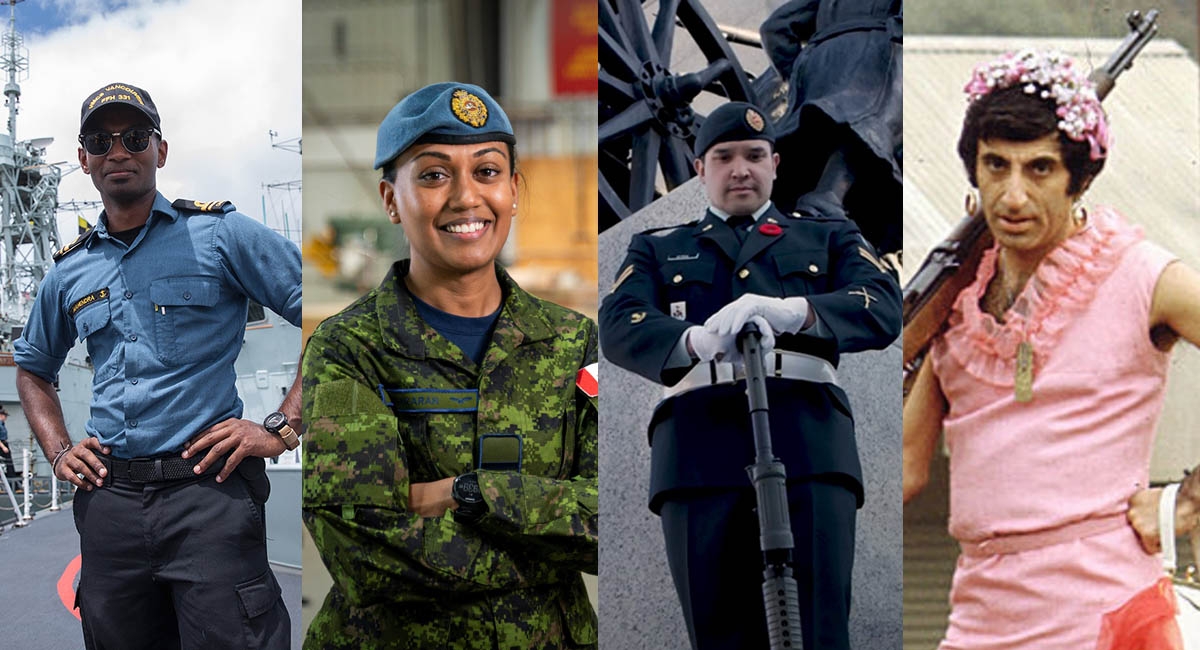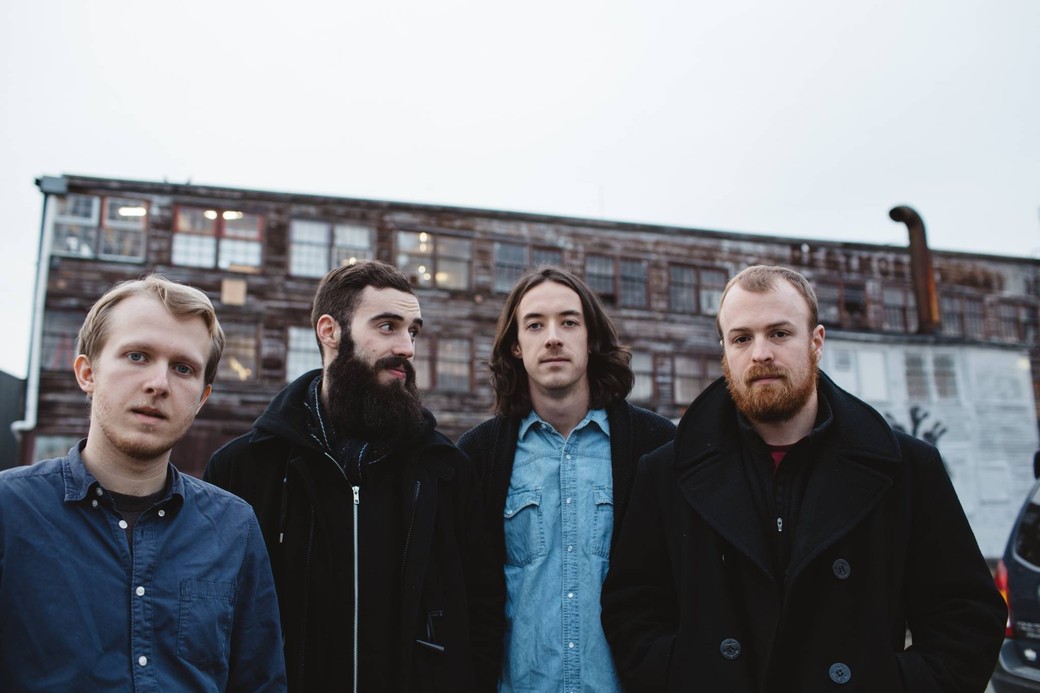
Diversity at any cost: Canada’s Defence Leaders misunderstand the ‘problem’ of tradition
By Ian Holloway, P.C., C.D., Q.C., Ph.D.
SARTORIAL CHANGE is in the air again in the Canadian Armed Forces. On Nov. 1 last year, the Acting Chief of Military Personnel, Major-General M.H.L. Bourgon, issued a message on “diversity, inclusion and culture change.” It was a lengthy announcement, with updates on a number of things. But the lead item related to dress. The CAF, Gen. Bourgon said, will do away with the concept of men’s and women’s uniforms. The new rules, she wrote:
“will eliminate binary choices by allowing members the freedom to choose the uniform that makes them most comfortable. Changes to our appearance policies will see a new approach to our look, one that provides a single standard applicable to all which is safe, inclusive, and modern. … By removing language related to gender, and eliminating separate instructions for men and women, this rewrite allows our Dress Instructions to honour the diversity of our people in uniform, while continuing to prioritize operational effectiveness and safety.”
In a media briefing on Mar. 23 she amplified her message: “The new gender-neutral standard will give members more choices while ensuring they are still dressed safely and appropriately for their duties.” The motive is understandable. Militaries around the world have been trying to grapple with this same issue — trying to maintain an effective instrument of state-controlled lethality in the Gen Z world. And some of the immediate social media coverage was predictable: “It’s time.” “The length of your hair doesn’t have an impact on your ability to fire a rifle.” “A hundred and fifty years ago, long hair used to be the norm.” And, of course, there was the perennial mantra, “Look at the Dutch!”
[Update: New dress regulations were released on July 5, 2022.]
Now the fact is that each of these claims is debatable. But what has been largely missing from the discussion is a consideration of the impact that these radical moves — and make no mistake, in the military context, they are radical — will have on operational effectiveness. Maybe the answer is none: all will be good, and fighting efficiency won’t be diminished a whit. Maj.-Gen. Bourgon said, after all, that the CAF would continue to “prioritize operational effectiveness.”
Or maybe the changes will have an effect. And that’s the point. Any time we’re propounding change, particularly radical change, it is critical that the impact on what one might term the “military bottom line” must be evaluated. Is there such a plan here? It doesn’t seem so, for there is not a word in this announcement which contemplates the possibility of assessing its impact down the road. The Defence Staff appears simply to be inviting the Service to go all in, without any view as to potential operational consequences. That’s either negligent or culpable. Or both.
One wonders: will we see an uptick in recruiting under these new rules? That seems doubtful. Designing better-fitting and more practical uniforms is a no-brainer. So is making everyone in the Service feel welcome and valued. But the reality is that military life isn’t attractive to most people anyway, and simply saying to personnel that they can all wear ponytails and nail polish won’t change that. Indeed, if haircuts were the impediment, why would any of us have joined in the late 60s and 1970s? I’d wager that an efficient system that got people who wanted to join in the door reasonably quickly, together with an actual defence policy — and the prospect of its implementation by the government — would accomplish a great deal more to increase enrolment than gender-neutral dress regulations.
How about retention, and its underlying cousin, morale? Is there evidence that people are leaving because of the tyranny of the current haircut regulations? Or because there are men’s and women’s uniforms? Maybe, but I’d bet that a far greater source of demoralization is the fact that the only time the CAF seems to make it to the front pages is when there is a new allegation of sexual misconduct among the higher leadership. Being able actually to buy new kit, whether planes or pistols, might help, too. Not to mention the perennial issues of pay and benefits and affordable housing for the junior ranks of the regular force. Wouldn’t addressing those problems in a serious way be a more productive investment?
In fact, this is a movie we’ve seen before. The unification of the Navy, Army and Air Force in 1968 was another grand experiment in social engineering in the military setting. Defence Minister Hellyer’s stated objective was not just to eliminate duplication and save money, but also to establish Canada (and thus himself) as a “leader” among the world’s militaries. In Nov. 1966, he was quoted as saying that unification would “provide the flexibility to enable Canada to meet in the most effective manner the military requirements of the future. It will also establish Canada as an unquestionable leader in the field of military organization” (my emphasis). [Quoted in L. Milberry, Sixty Years: The RCAF and CF Air Command 1924–1984. Canav Books, p. 367.]
Reading this statement now seems laughable. But in light of most professional military opinion at the time, it also seems like the worst sort of political hubris. Canada is no more seen as “an unquestionable leader” in military organization than we are in the field of military procurement. And, frankly, the history of our Armed Forces since 1968 has largely been one of trying to undo the harm wrought by Mr. Hellyer and his protégés. But the real problem with Hellyer’s unification project wasn’t the idea itself. Rather, it was the fact that no evaluative criteria — and thus, no easy off-ramp if it wasn’t working — were built into the scheme. But that’s what typically happens when the military is used as a guinea pig for social engineering.
ONE OF THE problems with current CAF leadership, both military and civilian, has to do with their stance vis-à-vis tradition. The nub of it, in my view, is that they take tradition literally but not seriously.
Tradition’s usefulness to the military, and other organizations which demand cohesiveness even under the most trying of conditions, lies in the inverse: we need to take tradition seriously, not literally. It is well-known that we humans are hard-wired to resist change. There is only so much that we can take before our cognitive system becomes overloaded and deliberate action becomes overtaken by a form of fight-or-flight response. In a necessarily dynamic organization like the armed forces, though, we must be in a state of perpetual change — because the threat milieu in which it operates is constantly changing. Precisely because of that we need the equilibrium that tradition and familiarity bring. Put another way, custom and tradition provides a kind-of institutional comfort zone that counterbalances the shifting demands of the operational environment. It sounds paradoxical, but it is respect for “static” tradition that allows the Armed Forces to perform effectively as a “kinetic” organization.
Traditions of course change and evolve, but in a healthy organization they do so mostly organically, and (except in rare cases) not because of bureaucratic direction. That’s why things like forbidding Trafalgar Day mess dinners and hamfisted attempts to “modernize” the naval toasts of the day, both of which Canada’s Navy has done in recent years, are not just silly but counterproductive.
No one was actually hoping that their superiors would fall sick or die when the traditional toast was made on a Thursday night (“To a bloody war or a sickly season!”) any more than anyone is yearning for war with the Netherlands when the Church Pennant is hoisted, the design of which represents the stitching together of the English and Dutch flags to signify a Protestant religious truce in the Anglo-Dutch Wars of the 17th century. And, frankly, if offence to modern secular sensibilities is to be the litmus test for the literalists among us, then saluting the quarterdeck should be on its last legs. After all, that tradition hearkens back to the time when a crucifix was displayed there!
Now, does it matter in the abstract what toasts we drink on a Thursday evening, or what we do or don’t do as we cross the brow of a warship? Of course not, but that’s not the point. The point is that things like this, and respect for the myriad of other traditions that we’ve inherited through the ages, are what mark us as members of the naval family, with all else that that entails, including the duty to place ourselves in harm’s way if we are ordered to do so. Upset those marks of a naval family and we risk upsetting a whole lot more. Military service implicitly places unnatural demands on its members. Respect for tradition is the glue that holds it together. Tradition, custom, and training are what enables a unit to operate without a ubiquitous iron first of enforced discipline.
As noted, in the wake of the ACMP’s announcement, social media was full of claims that the length of one’s hair does not have an impact on how well one can do one’s job. As Maj.-Gen. Bourgon herself said in her March press briefing, “The colour and the length of your hair does not define your quality as a soldier and aviator and sailor.” And that’s of course true on an individual basis. But it assumes that dress regulations were designed to make the individual member a better Clerk, or Cook, or Technician.
But they weren’t.
What they were intended to do was to signal one’s willingness to submit to discipline. And not just the professional discipline that one might see in any occupation, but rather the sort of discipline and cohesion that needs to exist when human instinct says that we should drop tools and run. People who take the “I can still shoot straight with long hair and piercings” line miss that. Military effectiveness depends on much more than a collection of excellent individuals. I once served under a university president who said that she didn’t want a team of champions, she wanted a championship team. She couldn’t have put it better had she been talking about the armed forces.
Some will remember the ill-fated U.S. Army ad campaign of the early 2000s based on the tagline, “Army of one.” The campaign was developed when polling showed that young people perceived military service to be dehumanizing. Even before it was launched, though, the new campaign attracted criticism from serving soldiers and others on the basis that it emphasized the wrong ethos. As Loren Thompson, a defense analyst at the Lexington Institute put it, “If you want to be an ‘Army of One’ you probably want to join the Hell’s Angels, not the U.S. Army.” In the end, the slogan was dropped after just four years, after the Army had missed its recruiting target by the widest margin in more than twenty years.
THERE ARE TWO other comebacks that one typically hears from the anti-tradition crowd. The first is to say that 150 years ago sailors and soldiers often wore their hair long and sported great beards. It worked then, so why wouldn’t it work now? Well, the simple answer is that a willingness to submit to discipline isn’t quite so important when, as was the case then, flogging was still on the scale of punishments, and when sailors could have their liberties completely curtailed on the whim of the commanding officer on a distant foreign station.
Then there is the tired Dutch comparison. “They allow long hair, and they have a union, too! And NATO hasn’t fallen apart, has it?”, is the essence of the argument. Well, one of the things that we have learned from the recent pandemic is that one can’t simply transpose sociological data from one country to another. The interplay of geography, culture, and society is just too complex to say that because something happened in one country, it will happen the same way in another.
But since it is so often trotted out, it is worthwhile to note that the Dutch long-hair policy was developed to deal with conscripts, not volunteers. And with the end of conscription, military haircuts came back. The German experiment with long hair was even more telling. In 1971, the Bundeswehr decreed that soldiers could wear their hair long, provided it was well-kempt. But on operations, soldiers had to wear hairnets. This led to a deluge of complaints: on one side, complaints about slovenliness (something which a simple Google search for period photos bears out), and on the other, complaints that wearing hairnets for a long time was uncomfortable. So after just fifteen months, the German Army dropped the long hair experiment. (And just for the record, for those who want us to emulate the Dutch and Germans, along with the long hair regulations, out went saluting. One wonders whether this is something that the CAF’s senior officers would relish, too. In for a penny, in for a pound!)
While social media was abuzz after the ACMP’s announcement, the mainstream media was largely silent. No doubt that caused those behind the policy (and those in the CAF’s Public Affairs Branch) to heave collective sighs of relief. Heaven knows, the CAF has had more than its share of bad press lately. Yet the fact that there was so little reaction among the public should be causing alarm bells to ring at National Defence Headquarters. For what it shows is just how little the average Canadian cares about the armed forces.
People may well roll their eyes when they read that our standard issue pistols were manufactured when Hitler was still the principal military threat. And they may show their disgust when another story of sexual misconduct comes to light. The war in Ukraine has, it is true, caused a recent uptick in concern about the relative antiquity of our military hardware. But does anyone seriously think that many Canadians care enough about defence to prioritize, say, ships or aircraft over healthcare or almost anything else? As former Lieutenant General and Liberal MP Andrew Leslie recently put it, the “PMO does not see any real political payback on defence expenditures.” Given the recent announcement of the so-called “supply and confidence agreement” between the Liberals and the NDP, it’s hard to imagine there being much of a change in that, Ukraine war or not. Sustained commitment to increased defence spending is not something the NDP is normally known for.
This is what really should be keeping defence planners up at night: The fact that the CAF is so poorly equipped and so undermanned, that it lacks a well-defined mission, and that nobody cares!
LEST THERE BE any doubt about this, one need only look at how the announcement of the new U.K.-U.S.-Australia defence nexus was largely a non-story among the mainstream Canadian public. Consider that three of the members of the Five Eyes have decided that it’s time to get serious about the Indo-Pacific, and we, as a nation which borders the Pacific Ocean, and which claims to be America’s greatest friend, are not invited. It’s hard to conceive of a bigger slap in the face in geopolitical terms than this. But for the ordinary Canadian in the street, it’s worthy of little more than a single news cycle.
So another question that the CAF needs to ask itself about this new policy is what impact it will have on the public’s view of it. If there is anything that rank and file military people reflexively grind their teeth about, it’s the notion of marketing. In many respects, the real unsung heroes of the Canadian Forces today are its Public Affairs Officers, who do their best in the face of cynicism from within and a blend of apathy and hostility from without. Yet their mission could not be more important. In a parliamentary democracy, how the Armed Services are seen by the civilian populace matters profoundly. Even if the CAF itself doesn’t particularly care about projecting a traditionally military image, if the public thinks it’s important, then the boot polish and hair clippers had better come out again.
Indeed, after pointy-end operational efficiency, engendering lasting public support for an effective military, and thus defence expenditures, has to be the principal concern of the Defence Staff. If the image of the military isn’t enhanced among the tax-paying public by these changes, the end result will only be a further erosion of an already tenuous relationship between Canadians and their armed forces, and that would be almost as disastrous outcome as the degrading of fighting ability.
Has the CAF leadership thought about any of this before the new gender-free dress announcement? I’ll bet not.
We should spare a thought for today’s military’s leadership. Being a leader is never easy, but these past few years have been especially challenging for our Admirals and Generals. They have been buffeted by storm upon storm. And they surely must dread each new promotion and appointment cycle, for they seem guaranteed to dredge up fresh new cases of misconduct. Seen through the lens of just trying to navigate the here and now, the temptation to short-termism in thinking is understandable. Yet in peacetime the military must almost always be a long-term project. By definition, trendiness is anathema to durability. Yet durability is the key to military readiness. Put another way, the military needs to think and act as if they were playing chess rather than checkers. The question is which game they were playing with this announcement.
Ian Holloway, P.C., C.D., Q.C., Ph.D., is a retired Chief Petty Officer of the RCN. He has degrees from Dalhousie, Berkeley, and Australian National University.
This article first appeared in the Spring-Summer 2022 print edition, Vol. 12, No. 1, of The Dorchester Review.
Photos: Canadian Armed Forces | Facebook










